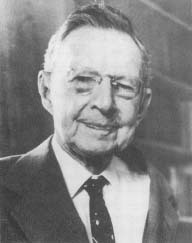Coolidge, William David
William Coolidge (1873-1975) was born in Hudson, Massachusetts, the son of a fanner and a dressmaker. As a youth, he worked in a shoe factory to help support his family. After attending public schools, Coolidge funded his own college education by borrowing money and earning scholarships and fellowships. With a degree from the Massachusetts Institute of Technology (MIT), Coolidge went to Germany to study physics. After earning his doctoral degree with high honors, he returned to MIT to do research.

Although Coolidge was content at MIT, in 1905 he was lured to General Electric Company's research laboratory with an offer to double his MIT salary. Coolidge had avoided a career in industry after experiencing factory work, but General Electric (GE) promised him freedom to pursue his own interests as well as the company's commercial research goals.
In just a few years, Coolidge solved one of the greatest technological problems of the time—developing a better filament for incandescent (very bright) light bulbs. Early electric light bulbs used carbon filaments, which were not only delicate to handle but also limited in the amount of light they could produce. Scientists knew that tungsten (the metal with the highest melting point), would perform better than carbon, but because tungsten is brittle, no one could figure out a way to make filaments from it. Coolidge invented a process for making tungsten bendable. As a result, modern electric light bulbs are still made with tungsten.
Coolidge also invented an X-ray tube that is still used by doctors and dentists. His revolutionary tube was based on a tungsten "target," which is bombarded in a vacuum by a stream of electrons to produce X-rays. Coolidge's tube allowed much more precise control over the X-ray wave length and could also accommodate much higher voltages.
During World War II (1939-1945), Coolidge contributed his expertise to various war-related projects. He postponed his retirement until 1945 in order to work throughout the war. Coolidge lived to the age of 102, continuing to enjoy hobbies such as travel and photography.
Comment about this article, ask questions, or add new information about this topic: